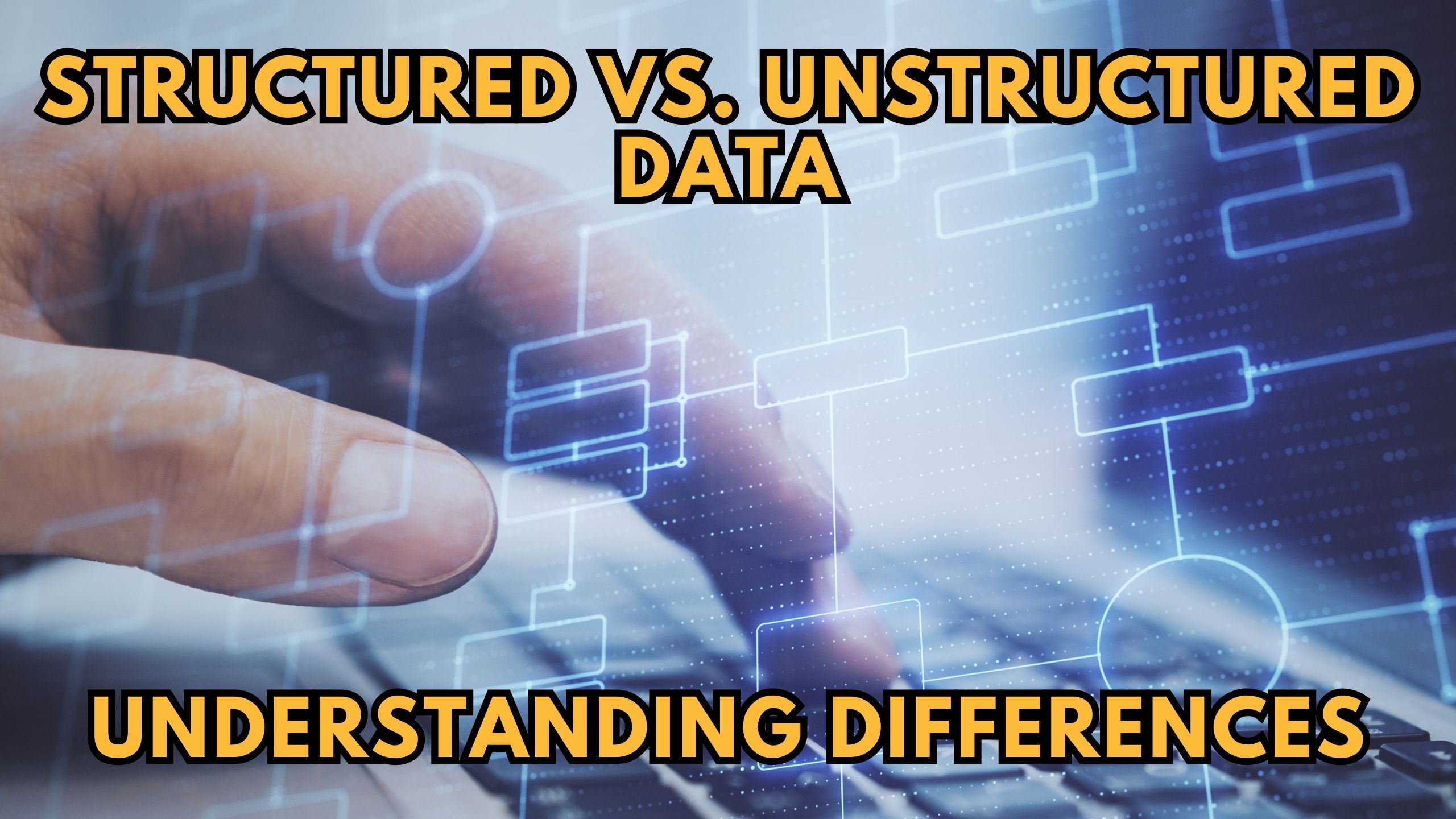Structured vs. Unstructured Data: Understanding Differences
- Data as a Service (DaaS) Software Marketing & Analytics


Structured vs. Unstructured Data: Understanding Differences
In the vast landscape of data management, the classification of information into structured and unstructured formats serves as a cornerstone for effective decision-making and organizational strategies. Let’s embark on a comprehensive exploration, delving into the nuanced disparities between structured and unstructured data, their diverse use cases, and the profound impact they have on the decision-making processes of modern enterprises.
Structured Data: The Foundation of Order
Structured data, characterized by its organized and well-defined nature, provides a systematic framework for storing information. Examples of structured data include numerical figures in spreadsheets, records in SQL databases, and meticulously organized tables. This methodical arrangement facilitates streamlined analysis, report generation, and the implementation of data-driven decision-making processes within businesses.
When delving into the intricacies of structured data, it’s crucial to acknowledge its role in maintaining the integrity and consistency of information. The rigid format of structured data allows for seamless integration with various analytical tools, enabling businesses to draw meaningful insights. This adherence to a clear structure is particularly advantageous in scenarios where data consistency and accuracy are paramount.
Furthermore, the reliability of structured data extends to its ease of storage and retrieval. With structured data, businesses can efficiently organize vast datasets, ensuring that relevant information is readily accessible. This organized approach contributes significantly to the efficiency of data management systems, reducing the time and resources required for data retrieval and analysis.
Unstructured Data: Embracing the Complexity of Information
In contrast, unstructured data deviates from the ordered format of structured data. It encompasses information that lacks a predefined data model and is often not organized in a tabular manner. Common examples of unstructured data include text documents, social media posts, emails, and multimedia files. While unstructured data poses challenges in terms of organization, it possesses a wealth of valuable insights and trends that can be harnessed using advanced analytics tools.
Unstructured data is often characterized by its dynamic and evolving nature. Unlike structured data, which adheres to a rigid format, unstructured data is versatile and adaptable. This adaptability allows businesses to capture a wide array of information, including customer sentiments, market trends, and qualitative feedback, fostering a more holistic understanding of their operational landscape.
One of the primary challenges associated with unstructured data lies in its complexity and the need for advanced analytical techniques to derive meaningful insights. Businesses, faced with diverse sources and formats of unstructured data, often resort to cutting-edge technologies. These include natural language processing and machine learning algorithms to unlock hidden value within this data type.
Utilizing Microsoft Excel for Structured Data Analysis
In the realm of structured data analysis, Microsoft Excel stands out as a stalwart tool that has been a mainstay for businesses across various industries. Excel’s robust features and familiar interface empower organizations to analyze structured information efficiently. Excel’s ability to perform complex calculations, create visually appealing charts, and organize data precisely is crucial. It makes it indispensable for businesses seeking actionable insights from structured datasets.
Excel’s grid-based structure and extensive formula library make it well-suited for managing and manipulating structured data. The software’s versatility extends to compatibility with various data sources. Users can seamlessly import structured datasets from databases and external sources. This capability positions Excel as a valuable asset for businesses relying on structured data for critical decision-making processes.
Moreover, Excel’s user-friendly interface makes it accessible to individuals across different proficiency levels. From basic data entry tasks to advanced statistical analysis, Excel caters to a wide spectrum of analytical needs. The software’s familiarity and widespread adoption enhance its significance in structured data analysis, making it a go-to solution for businesses.
Extracting Insights from Unstructured Data with MonkeyLearn
While structured data analysis is well-supported by tools like Microsoft Excel, the realm of unstructured data requires specialized solutions to unlock its full potential. MonkeyLearn emerges as a powerful ally in this domain, offering advanced text analysis capabilities that enable businesses to derive valuable insights from unstructured textual data.
MonkeyLearn’s suite of tools includes sentiment analysis, keyword extraction, and categorization. These provide businesses with the means to process and understand unstructured text data at scale. In a landscape where unstructured data often includes vast amounts of text, MonkeyLearn excels at extracting meaningful patterns and sentiments. Sources like customer reviews, social media comments, and open-ended survey responses are effectively analyzed.
The relevance of MonkeyLearn in the context of unstructured data lies in its ability to automate and streamline the analysis of textual information. Businesses use MonkeyLearn’s models to categorize and tag unstructured data, transforming it into structured insights for informed decision-making. This transition from unstructured to structured information empowers organizations to harness the potential hidden within textual data sources.
Incorporating Salesforce for Structured Customer Relationship Data
Structured data is crucial in CRM, serving as a strategic asset for organized and accessible customer information in business operations. Salesforce, a renowned CRM solution, excels in managing structured customer data, providing businesses with a centralized platform to organize and utilize information effectively.
Salesforce’s structured approach to customer data management facilitates a comprehensive view of customer interactions, preferences, and purchase history. Organized information empowers businesses to tailor marketing strategies and personalize customer interactions. Informed decisions are made based on a deep understanding of customer relationships.
One of the key advantages of Salesforce lies in its scalability and customization capabilities. As businesses grow and evolve, Salesforce adapts to accommodate expanding datasets and changing organizational needs. The platform’s scaled handling of structured customer data makes it a valuable tool for businesses building and nurturing relationships strategically.
Harnessing Unstructured Data for Marketing Insights with Brandwatch
In the dynamic landscape of marketing, insights derived from unstructured data can significantly impact strategic decision-making. Brandwatch, a leading social listening and analytics platform, specializes in harnessing unstructured data from social media and online sources to provide businesses with valuable marketing insights.
Brandwatch’s capabilities go beyond traditional structured data sources. Businesses can tap into social media conversations, user-generated content, and online discussions for insights. By analyzing unstructured data, businesses can gain a deeper understanding of consumer sentiments, emerging trends, and the effectiveness of marketing campaigns.
The relevance of Brandwatch in the context of unstructured data lies in its ability to aggregate and analyze massive volumes of social and online content. Brandwatch uses sentiment analysis and trend monitoring to keep businesses in tune with their target audience’s changing preferences and opinions.. This unstructured data-driven approach enables marketers to fine-tune their strategies, enhance brand perception, and respond effectively to market dynamics.
Conclusion: Balancing the Binary of Data
In the intricate dance between structured and unstructured data, organizations must navigate a landscape where both types of information hold immense value. The structured nature of data forms a solid foundation for organized analysis and decision-making. Meanwhile, the unstructured aspect captures nuanced richness often overlooked by structured data alone.
The key takeaway is not a matter of choosing between structured or unstructured data but recognizing the symbiotic relationship they share. Businesses poised to gain a competitive edge in today’s data-driven landscape effectively balance the binary of data. They seamlessly integrate structured and unstructured insights into decision-making processes.
Elevate Your Data Management with Subscribed.fyi
Embark on a journey to streamline your data management processes with Subscribed.fyi. Our platform serves as the all-in-one solution for freelancers and small teams seeking to understand, compare, and manage their SaaS stack. By simplifying decision-making and enhancing productivity, we empower users to navigate the complexities of SaaS tools and expenses effortlessly.
Unlock Secret Deals and Save Big: Sign up for free on Subscribed.fyi today to unlock exclusive member-only deals on 100+ SaaS tools. Experience the perks of substantial savings, totaling $100,000+ per year, and gain access to a plethora of secret deals that are just a click away.
Relevant Links:





